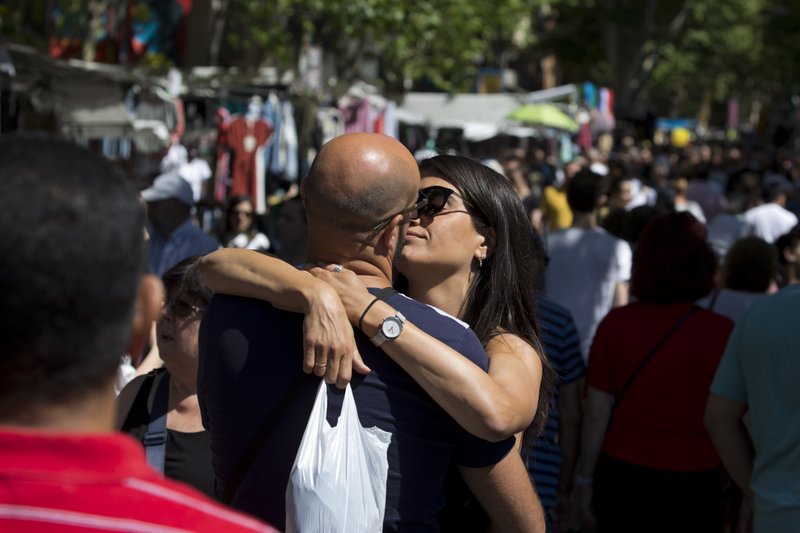
A couple embrace in the crowded Rastro street market in Madrid, Spain, Sunday, July 28, 2019. (Photo: AP)
Inflation and growth have sagged in the eurozone, official figures showed Wednesday, bolstering the case for the European Central Bank to inject another dose of monetary stimulus into the 19-country currency bloc at its September meeting.
The European Union’s statistics agency Eurostat said that growth in the eurozone halved in the second quarter to 0.2% and that inflation in July fell to an annual rate of 1.1% from 1.3% the previous month. The inflation figure is well below the ECB’s goal of just under 2%, which is considered best for the economy.
Italy, the third-biggest economy in the eurozone, was a weak spot, showing zero growth after only 0.1% in the first quarter. Nicola Nobile, lead eurozone economist at Oxford Economics, said in a research note that “the continued weakness in the eurozone surveys suggests that a pickup in GDP growth” in the second half “is not on the cards.”
Analysts think the ECB will add more stimulus even as unemployment — at 7.5% in June — hit its lowest rate since July 2008.
Risks to growth from the US-China trade conflict have led the ECB as well as the US Federal Reserve to lean toward cutting interest rate benchmarks — the Fed is set to cut its main interest rate later Wednesday for the first time since 2008 from its current range of 2.25%-2.5%.
Additionally, employment is what economists call a trailing indicator — it reflects past economic progress more than it points to the future. The ECB, however, must look ahead to ward off potential risks to growth and inflation from higher trade tariffs imposed by the US and China as well as any disruption from a chaotic Brexit.
Britain is due to leave the European Union on Oct. 31 and new Prime Minister Boris Johnson has indicated he is willing to do so without a divorce agreement, a development that would see growth-damaging tariffs imposed on traded goods.
Analysts expect the ECB to deliver a stimulus package at its Sept. 12 meeting. That could include a cut in the deposit rate on money left overnight at the ECB by commercial from minus 0.4% to minus 0.5%. The unusual negative rate is in effect a penalty aimed at pushing banks to risk lending excess cash rather than letting it pile up at the ECB.
ECB President Mario Draghi has also said the bank has asked staff to study a possible re-start of bond purchases, a step that pumps newly created money into the financial system. It was only last December that the ECB halted its nearly four-year bond-buying program that effectively pumped 2.6 trillion euros ($2.9 trillion) into the eurozone economy in an attempt to get inflation up toward the bank’s goal.
But indicators have weakened since then amid ongoing uncertainty about whether US President Donald Trump and Chinese officials will reach a trade deal that would remove the threat of more tariffs.


